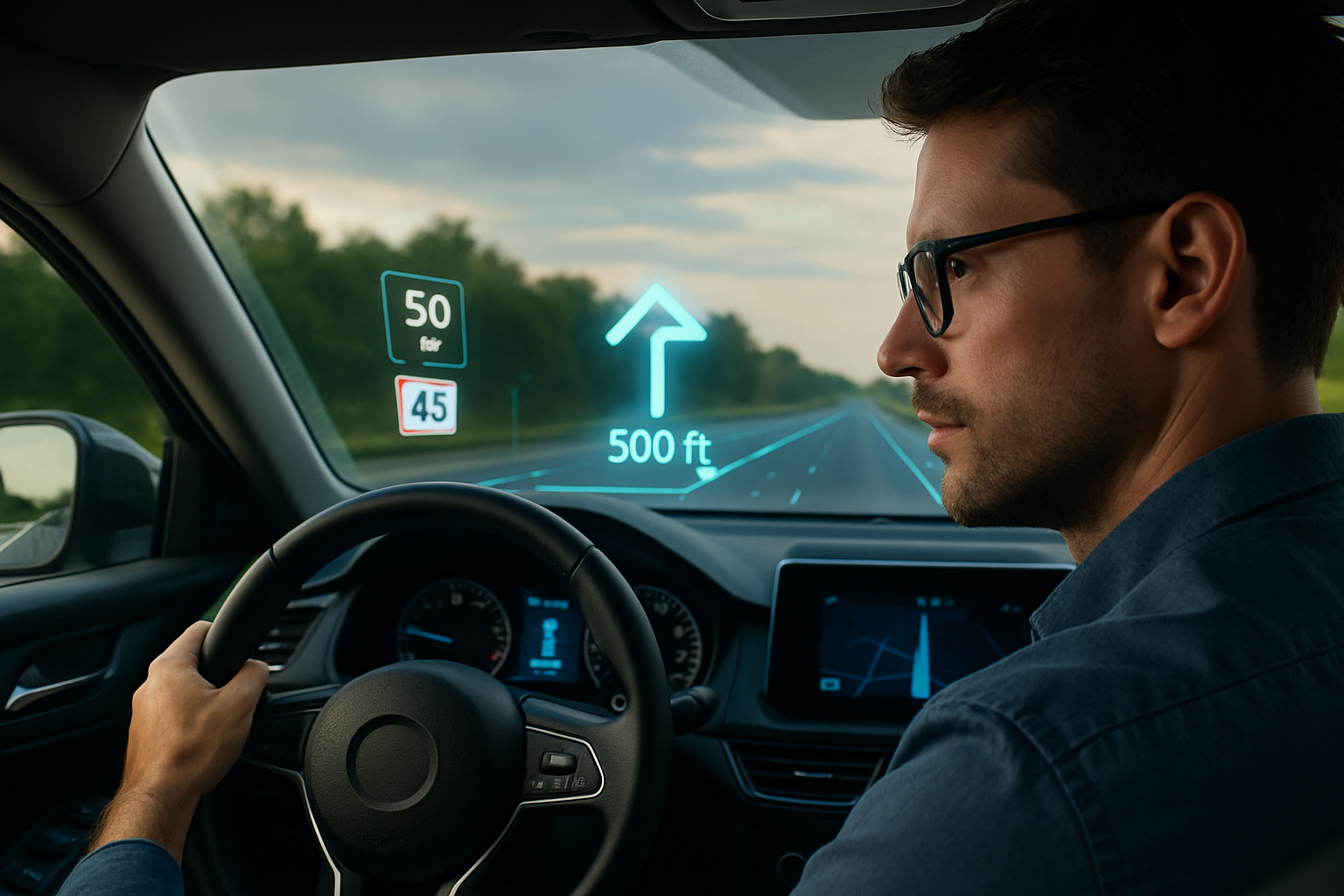Augmented Reality Heads-Up Displays: The Future of Driving
The windshield of tomorrow is more than just glass – it's a gateway to an enhanced driving experience. Augmented Reality (AR) Heads-Up Displays (HUDs) are transforming the way we interact with our vehicles and the road ahead. This cutting-edge technology overlays crucial information directly onto the driver's field of view, creating a seamless blend of the digital and physical worlds. As we delve into this revolutionary advancement, we'll explore how AR HUDs are set to redefine safety, navigation, and the overall driving experience.

The concept of HUDs, originally developed for military aviation, made its way into automobiles in the late 1980s. These early systems projected simple information like speed onto the windshield, allowing drivers to monitor essential data without looking down. As technology progressed, so did the capabilities of HUDs, leading to the current revolution in AR-enhanced systems.
How AR HUDs Work
At the heart of AR HUD technology lies a complex interplay of sensors, processors, and display systems. These systems use a combination of GPS data, car sensors, and cameras to gather information about the vehicle’s surroundings. This data is then processed in real-time and projected onto the windshield using advanced optics.
The key to AR HUDs is their ability to anchor digital information to real-world objects. For example, navigation arrows can appear to be painted on the actual road, while collision warnings can highlight potential hazards. This seamless integration of virtual and real elements creates an intuitive and non-distracting interface for drivers.
Enhanced Safety Through Augmented Awareness
One of the primary benefits of AR HUDs is their potential to significantly improve road safety. By projecting critical information directly into the driver’s line of sight, these systems reduce the need for drivers to look away from the road. This can dramatically decrease reaction times in potentially dangerous situations.
AR HUDs can highlight pedestrians, cyclists, and other vehicles, making them more noticeable, especially in low-visibility conditions. They can also provide real-time updates on road conditions, such as icy patches or upcoming sharp turns. By presenting this information in a contextual, easy-to-understand format, AR HUDs help drivers make better-informed decisions more quickly.
Revolutionizing Navigation and Driver Assistance
Gone are the days of glancing at a separate screen for navigation instructions. AR HUDs can project turn-by-turn directions directly onto the road ahead, making navigation more intuitive and less distracting. These systems can highlight the correct lane for an upcoming turn, show real-time traffic information, and even indicate available parking spaces in urban environments.
Moreover, AR HUDs are becoming an integral part of advanced driver assistance systems (ADAS). They can display adaptive cruise control information, lane departure warnings, and blind spot alerts in a way that feels natural and unobtrusive. This integration of AR with ADAS creates a more cohesive and effective driver support system.
The Technical Challenges of AR HUDs
Implementing AR HUDs is not without its challenges. One of the primary hurdles is creating displays that are visible in all lighting conditions. Bright sunlight can wash out projections, while nighttime use requires careful brightness adjustment to avoid glare. Engineers are working on advanced optical systems and adaptive brightness controls to address these issues.
Another significant challenge is latency. For AR overlays to be effective, they must align perfectly with the real world in real-time. Even a slight delay can create a disconnect between what the driver sees and the actual environment, potentially leading to confusion or distraction. High-speed processing and predictive algorithms are being developed to minimize this latency.
The Road Ahead for AR HUDs
As AR HUD technology continues to advance, we can expect to see even more innovative applications. Future systems might incorporate eye-tracking technology to provide personalized information based on where the driver is looking. We may also see the integration of AR HUDs with vehicle-to-everything (V2X) communication, allowing cars to share information about road conditions and potential hazards in real-time.
The potential for AR HUDs extends beyond just driver information. Passengers could use this technology for entertainment or productivity, turning windows into interactive displays. This could revolutionize the in-car experience for both drivers and passengers.
Implications for the Automotive Industry
The rise of AR HUDs is set to have a profound impact on the automotive industry. As this technology becomes more prevalent, it will likely become a key differentiator for car manufacturers. We may see increased collaboration between tech companies and automakers to develop more advanced and integrated AR systems.
This shift towards AR-enhanced driving experiences will also necessitate changes in automotive design and manufacturing. Windshields will need to be optimized for projection, potentially leading to new glass technologies and production methods. The integration of AR systems may also influence the overall interior design of vehicles, as traditional instrument clusters could become obsolete.
Regulatory and Ethical Considerations
As with any new automotive technology, AR HUDs will need to navigate a complex regulatory landscape. Questions about driver distraction, information overload, and system reliability will need to be addressed. Regulators will likely need to develop new standards and guidelines specific to AR HUD technology to ensure its safe implementation.
There are also ethical considerations to be addressed. How much information is too much? Could over-reliance on AR systems lead to a decrease in driver awareness or skill? These are questions that automakers, regulators, and society at large will need to grapple with as this technology becomes more widespread.
Conclusion
Augmented Reality Heads-Up Displays represent a significant leap forward in automotive technology. By seamlessly blending digital information with the real world, these systems have the potential to make driving safer, more intuitive, and more enjoyable. As the technology continues to evolve, we can expect to see AR HUDs become an increasingly integral part of the driving experience, transforming not just how we interact with our vehicles, but how we perceive and navigate the world around us. The road ahead for AR HUDs is bright, promising a future where the line between the digital and physical worlds becomes increasingly blurred, all in service of creating a better, safer driving experience.




